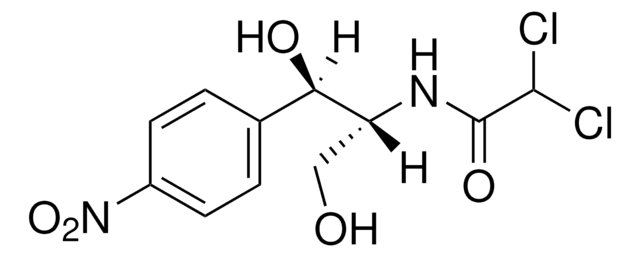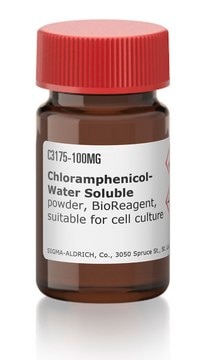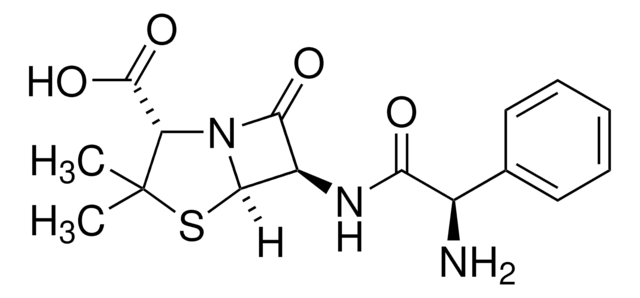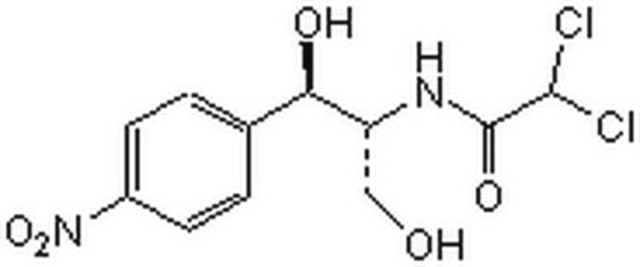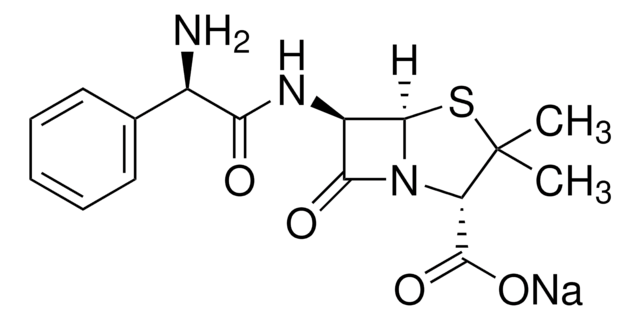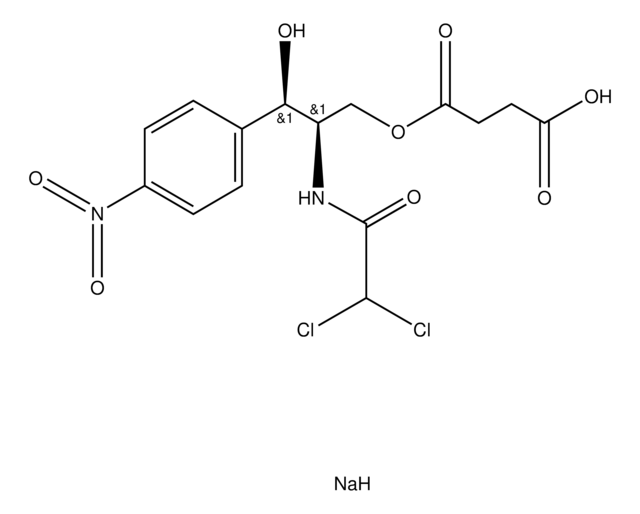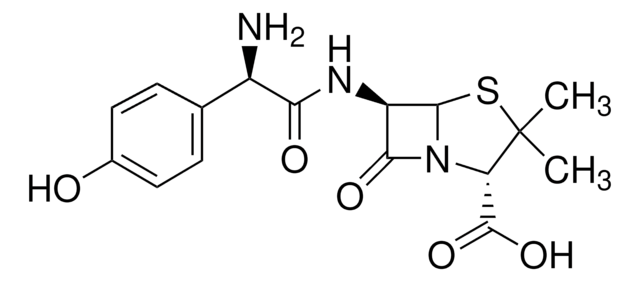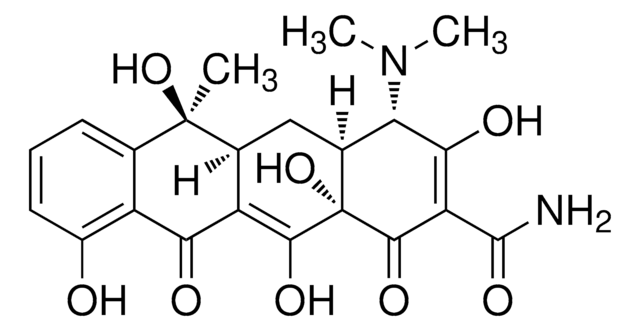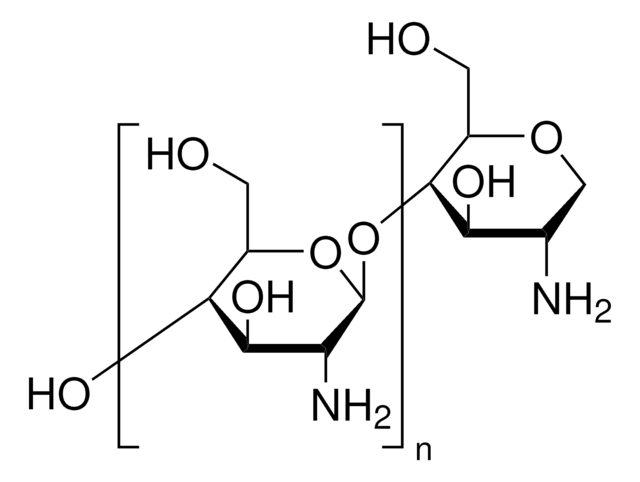C3787
Chloramphenicol succinate sodium salt
≥80% (HPLC)
Synonym(s):
Chloramphenicol α-succinate
About This Item
Recommended Products
Quality Level
assay
≥80% (HPLC)
form
solid
solubility
H2O: 50 mg/mL
antibiotic activity spectrum
Gram-negative bacteria
Gram-positive bacteria
mode of action
protein synthesis | interferes
SMILES string
[Na].O[C@@H]([C@@H](COC(=O)CCC(O)=O)NC(=O)C(Cl)Cl)c1ccc(cc1)N(=O)=O
InChI
1S/C15H16Cl2N2O8.Na.H/c16-14(17)15(24)18-10(7-27-12(22)6-5-11(20)21)13(23)8-1-3-9(4-2-8)19(25)26;;/h1-4,10,13-14,23H,5-7H2,(H,18,24)(H,20,21);;/t10-,13-;;/m1../s1
InChI key
RJOAHMNSYANTPN-OWVUFADGSA-N
Looking for similar products? Visit Product Comparison Guide
Related Categories
General description
Application
Biochem/physiol Actions
Mode of Resistance: Use of chloramphenicol acetyltransferase will acetylate the product and inactivate it.
Antimicrobial Spectrum: This is a broad spectrum antibiotic against gram-positive and gram-negative bacteria, and is used mainly for ophthalmic and veterinary purposes.
Caution
Preparation Note
Other Notes
signalword
Warning
hcodes
Hazard Classifications
Acute Tox. 4 Oral - Carc. 2
Storage Class
11 - Combustible Solids
wgk_germany
WGK 3
ppe
Eyeshields, Gloves, type P3 (EN 143) respirator cartridges
Certificates of Analysis (COA)
Search for Certificates of Analysis (COA) by entering the products Lot/Batch Number. Lot and Batch Numbers can be found on a product’s label following the words ‘Lot’ or ‘Batch’.
Already Own This Product?
Find documentation for the products that you have recently purchased in the Document Library.
Customers Also Viewed
Our team of scientists has experience in all areas of research including Life Science, Material Science, Chemical Synthesis, Chromatography, Analytical and many others.
Contact Technical Service